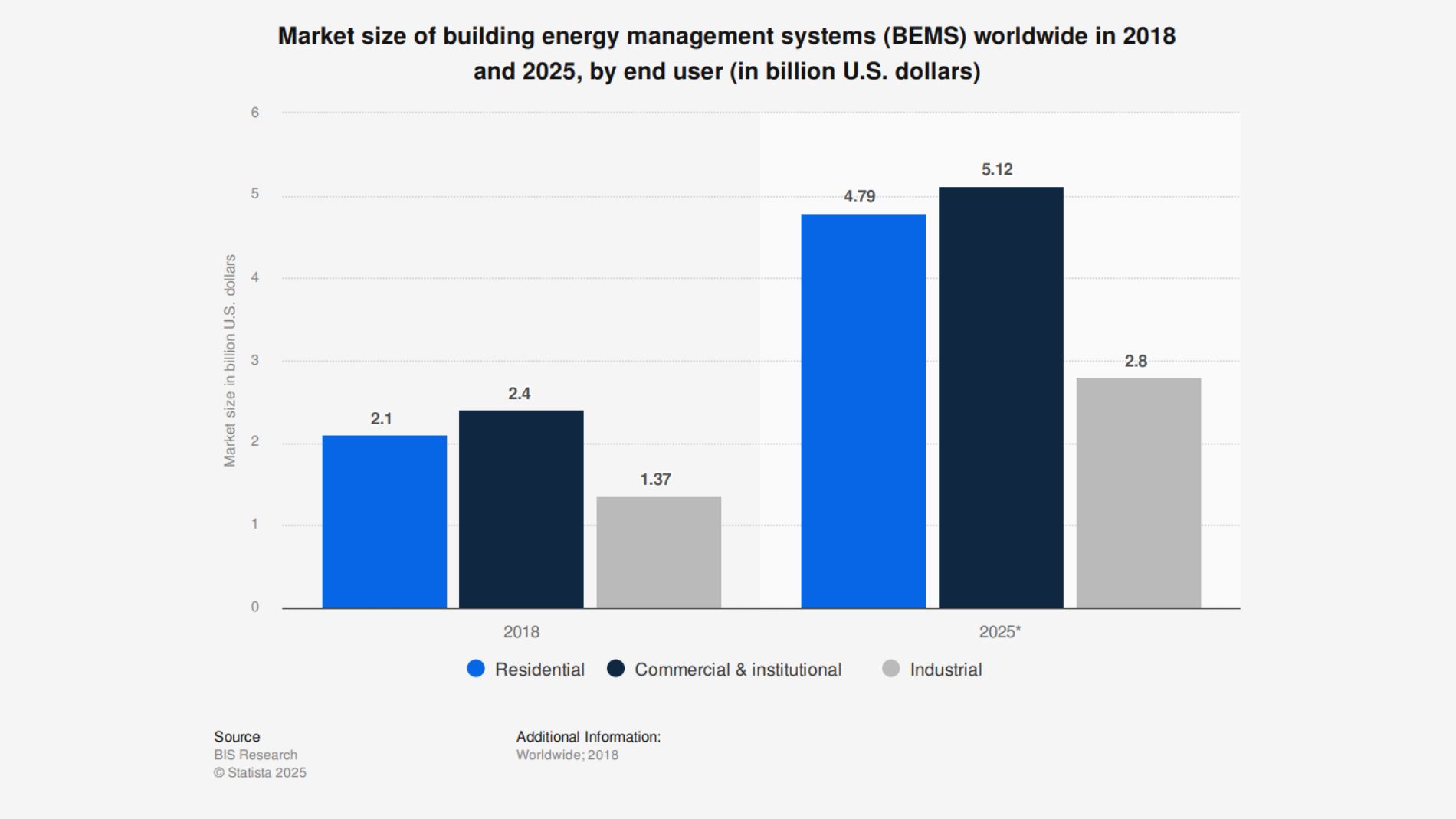Reading time: 4 minutes
BEMS are designed to automatically monitor and control energy-consuming electrical and mechanical equipment, such as thermostats, HVAC units, and lights, within a single building or multiple buildings. These systems regulate various types of equipment, including air conditioners, lights, boilers, water heaters, outlet machines, elevators, and sanitary and plumbing fixtures. Building Energy Management Systems (BEMS) monitor, control, and optimise energy consumption in buildings. The following aspects of BEMS are critical:
- Purpose and Function: BEMS aim to reduce energy consumption in buildings, enhance efficiency, and lower operating costs. They facilitate centralised control over heating, ventilation, air conditioning (HVAC), lighting, and other energy-consuming systems.
- Data Analysis: BEMS gather and analyse real-time data on energy usage. This information can be utilised to identify patterns, detect inefficient systems, and make informed decisions to enhance energy efficiency.
- Automation: Many BEMS feature automation capabilities which allow system control based on predefined rules or real-time data. For instance, lighting can automatically dim or heating can adjust when rooms are unoccupied.
- Integration: BEMS can be integrated with other building management systems, such as security systems and access control systems, to enable comprehensive building management.
- Sustainability: By optimising energy use, BEMS contribute to reducing CO₂ emissions and promoting sustainable practices. This is particularly significant in the context of global climate protection efforts.
- User-Friendliness: Modern BEMS often include user-friendly interfaces that allow facility managers and other users to easily monitor and manage energy consumption.
- Regulatory Requirements: Various regions have regulations and standards that encourage or mandate the implementation of BEMS in both new and existing buildings to improve energy efficiency.
Market Size for BEMS
While to overall market size for all energy management systems is estimated at around USD 55 billion in 2024, the numbers for Building Energy Management Systems (BEMS) vary between USD 7.09 billion in 2024 and USD 8.5 billion in 2023 according to two different studies. An older study from 2018 shows an estimated market size in 2018 at USD 5.87 billion and shows a break-down by end-user market of around 37% for the market for residential buildings, 40% for commercial and institutional buildings and around 23% for industrial buildings. This study estimated the global BEMS market size of USD 12.7 billion in 2025.

According to the Business Research Insights study, the global building energy management system market size will grow from USD 7.09 billion in 2024 to USD 20.39 billion by 2033, exhibiting a CAGR of 8.7% during the forecast period from 2025 to 2033. The study estimates North America to hold a 35% market share of USD 2.48 billion in 2024, while Asia-Pacific accounts for 40% of the market share (USD 2.84 billion in 2024) and Europe holds 20% of the market share (USD 1.42 billion in 2024). This study points out that software dominates the market with approximately 45% of sales, while hardware holds around 35% of the market. Services represent around 20% of the market, driven by maintenance, consultancy, and retrofitting services for energy-efficient buildings.
Market outlook for BEMS
Government regulations, cost savings, and energy optimisation have led households, industries, and companies to adopt energy management solutions. BEMS reduce costs through metering, communication, and software applications. An MIT study found buildings waste at least 30% of their energy, which BEMS can avoid. Building energy management systems now integrate smart meters, sensors, and other devices. However, high installation costs due to the integration of multiple technologies challenge market growth.
The market for energy management systems (BEMs) is expected to grow significantly due to the increasing focus on sustainability and energy efficiency in buildings. The demand for BEMS solutions is rising with the growing emphasis on environmental impact assessments and regulatory requirements. The combination of IoT technology and data analytics enables real-time monitoring and optimization of energy consumption, reducing costs and carbon footprints. Additionally, the development of smart buildings and the increased use of renewable energy sources are driving market growth and providing opportunities for BEMS suppliers to meet the evolving needs of the building sector.
Several factors are influencing the market for building energy management systems. Firstly, stringent government regulations requiring energy efficiency standards in buildings are encouraging stakeholders to invest in BEMS systems. Secondly, the adoption of BEMs for energy optimization is being driven by the increasing environmental concerns of building owners and rising operating costs. Furthermore, advancements in cloud computing and IoT technologies enable seamless integration and real-time monitoring of energy systems, enhancing the efficiency of BEMS solutions. The integration of renewable energy sources and the trend towards smart buildings are also significant factors contributing to the increased demand for BEMs and the expansion of the market.
With the advent of IoT (Internet of Things) and smart building technologies, BEMS are anticipated to become increasingly intelligent and interconnected, enabling even more precise control and analysis of energy consumption. Overall, BEMS play an essential role in creating energy-efficient and sustainable buildings by facilitating effective monitoring and control of energy usage.










